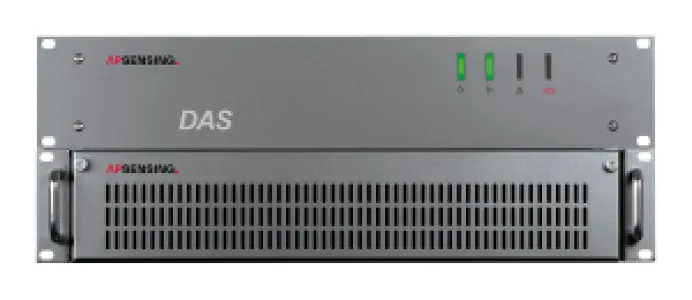AP Sensing GmbH
Booth number: 8-F27
www.apsensing.com
About us
The German company AP Sensing is a leading provider of distributed fiber optic solutions (DFOS) for monitoring critical infrastructure applications.
A blazing fire can have devastating consequences, which is why our AP Sensing Linear Heat Detection (LHD) solution provides fast and reliable heat/fire monitoring for application areas such as:
- Road/rail transportation tunnels (Euro Tunnel)
- Conveyor belts, hot roller detection, silos, floating roof tanks
- Photovoltaic installations (green field/rooftop), battery power storage systems
- Large infrastructure (parking garages, Mecca Clock Tower)
- Cable trays, false floors, and other areas that are difficult to monitor
Large container ships, Ro-Ro car carriers, vessels, and maritime use
Our fiber optic LHD offers maximum reliability, even under severe conditions – withstanding high temperatures and unaffected by wind, corrosion, dirt, and EMI. It is thoroughly tested and certified (VdS, UL, FM, ATEX, IECEx, maritime DNV, SIL) with the industry’s fastest fire detection and lowest false alarm rate.
AP Sensing Distributed Acoustic Sensing (DAS) technology for perimeter intrusion detection (PIDS) is catered for real-time and gapless monitoring and safeguarding of your critical assets, such as
Transportation hubs, airports, shipping terminals
Military installations, borders
Power plants/stations, refineries, oil & gas pipelines, datacentres
AP Sensing offers complete end-to-end solutions, customized project planning, and responsive global support.
Address
Herrenberger Str. 130
71034 Boeblingen
Germany
E-mail: info@apsensing.com
Phone: +49 7031 3096610
Internet: www.apsensing.com/en
Almoayyed Tower, Bldg. 2504, Rd. 2832, Blk. 428, 3rd Fl., Office 304
Seef
Bahrain
E-mail: meai@apsensing.com
Phone: +973 1360 6017
Internet: www.apsensing.com/en
Contact person:
Products & Services
AP Sensing Linear Heat Detection (LHD) solution provides fast and reliable heat/fire monitoring for application areas such as:
- Road/rail transportation tunnels (Euro Tunnel)
- Conveyor belts, hot roller detection, silos, floating roof tanks
- Photovoltaic installations (green field/rooftop), battery power storage systems
- Large infrastructure (parking garages, Mecca Clock Tower)
- Cable trays, false floors, and other areas that are difficult to monitor
AP Sensing Distributed Acoustic Sensing (DAS) technology for perimeter intrusion detection (PIDS) is catered for real-time and gapless monitoring and safeguarding of your critical assets, such as
Transportation hubs, airports, shipping terminals
Military installations, borders
Power plants/stations, refineries, oil & gas pipelines, datacentres
Fiber optic Linear Heat Detection/Distributed Temperature Sensing
Fiber Optic Linear Heat Detection (LHD) uses one, single passive fiber optic cable (with an average diameter of 4 mm) as a linear temperature sensor over a length of up to 16 km per channel. The result is a continuous temperature profile along the entire length of the sensor cable, providing gapless monitoring and complete asset coverage. Unlike conventional fire detection systems, fiber optic LHD detects and locates fires quickly and precisely, tracking fire size and spread direction regardless of air currents. LHD enables early identification of rate of heat rise, and therefore detects heat abnormalities earlier than other technologies, nevertheless is easy to integrate into existing fire detection systems. Our system has a very low false alarm rate, with the industry’s most complete set of certifications (VdS EN 54-22, UL521, ULC S530, FM 3210, ATEX/IECEX, KFI, CCC, SIL2). It is well suited for hazardous environments and the sensor cable can withstand temperatures up to 750 °C without losing monitoring capabilities.
Distributed Acoustic Sensing
The AP Sensing’s phase-based DAS system measures the acoustic vibrations on the fiber based on the principles of Coherent Optical Time Domain Reflectometry (C-OTDR). Revolutionary 2P Squared technology of DAS provides a true linear measurement of dynamic fiber length changes generated by strain related to acoustic/vibration signals or by temperature changes.

